A Raman Spectral Area Scanning Method to Identify the Sequences of Crossed Writings and Seal Stamps
In the field of document identification, it is always challenging to determine the printing sequences of crossed writings and seal stamps, which can serve as important evidence in litigation. Some common methods to determine the intersection sequence are expensive, destructive, cumbersome, and time-consuming. In this study, we provide several new potential ideas to help solve those problems by using the Raman spectral area scanning method to identify the intersection sequence (printing order) quickly and nondestructively. The results show that for red or blue seal inks, Raman spectroscopy can be used for good verification and as a supplementary method in determining the intersection sequence of writings and seal stamps. It is also effective for pigments analysis and can powerfully complement other analytical methods.
The sequence of crossed writings and seal stamps of documents must be determined in many economic and civil litigation cases (1–4). Some specific or important documents are formed in the order of writing or printing first, and then applying seal stamps after verification. Some criminal suspects often use the reverse order of the document formation process by applying seals first and then the writing or printing of the document to forge such documents. The intersection sequence (printing order) identification of writings and seal stamps confirms the authenticity of the document, and it provides a basis for the court to judge the facts stated in the documents for both economic and civil cases (5–8).
The main methods commonly used to identify the intersection sequence of writings and seal stamps include methods such as stripping, decolorization (9), sticking, fluorescence testing (10), and microscopy observation (11–13). Inspection methods such as microscopic inspection, fluorescence inspection, spectral inspection, and experimental inspection have been specified in the national standard “Specification for forensic examination of document formation time (GB/T 37233-2018).” The microscopic inspection method and experimental verification have also been mentioned in the ministerial standard “The intersection sequence identification of writings and seal stamps,” issued by the Ministry of Justice in 2010. The above commonly used methods are mostly expensive, destructive, cumbersome, and time-consuming (14). Testing and judging these sequences mainly rely on personal experience; therefore, strong subjectivity may lead to unexpected errors during examination. In 2010, the passing rate of proficiency testing organized by the Ministry of Justice in the intersection sequence identification of writings and seal stamps was only 71% in some provinces of China. Therefore, an objective and effective detection method to improve the reliability and accuracy of document identification is urgently needed. Some effective detection methods, including spectral inspection and mass spectrometry (MS) (15), are currently of high importance. Infrared (IR) spectroscopy is one of the most widely used spectral inspection methods in forensic sciences. It can effectively identify blue ballpoint pen inks, including dyes, solvents, film-forming agents, dispersants, and so forth. The literature on such studies has been extensive (16–19). However, the IR method does not adequately eliminate the paper signal interference. For example, good information can be obtained by detecting the ink alone, but if the ink is written on paper, only the signal of the paper can be obtained while the entire ink signal is obscured. The inspection materials and samples obtained from actual cases are usually with ink written on paper; therefore, using IR spectroscopy to identify writing ink is not applicable when handling actual forensic cases. The problem of a missing ink signal on paper can be solved by using Raman spectroscopy (20–21). The Raman spectrum of ink measured on glass slides is identical to those signals obtained on paper, indicating that the paper had no influence on the detection of inks using Raman spectroscopy. Therefore, Raman spectroscopy is different from IR spectroscopy, and it is more suitable for practical use cases (22–23). As a result, we have attempted to provide a nondestructive detection method using Raman spectral area scanning in this study.
Materials and Methods
Three groups of seal samples were randomly collected from different manufacturers and markets. A Renishaw Invia confocal Raman microscope system with three laser sources emitting at 532, 633, and 785 nm with a charge-coupled device (CCD) detector was employed for collecting the Raman spectra. Laser power within 10–100% was optimized to achieve strong signals and protect the samples from burning. Before scanning the sample, silicon with a fixed peak position at 520 cm-1 was used for calibration. The spectra were collected in extensive mode over a Raman shift range of 200–2000 cm-1. No characteristic peaks appeared below 200 cm-1 or above 2000 cm-1. Every spectrum was obtained in using three replicate measurements to enhance the signal-to-noise (S/N) ratio. The area scanning function was employed for the overall analysis and differentiation. In this study, the morphology of seal ink near the intersection of seal ink and the writing stroke can be observed using Raman spectrum surface scanning. The laser wavelength used was 785 nm, the laser intensity was 10%, the magnification was 5–50 times, and the scanning step length was 8 μm in both the horizontal and vertical directions using horizontal progressive scanning mode.
Results and Discussion
Figure 1a shows the Raman spectra of the carbon powder with strong peaks at 993 cm-1 and 660 cm-1. Figure 1b shows the Raman spectra of the intersection where the document was written first and then sealed. It can be seen that the Raman spectrum peaks of carbon powder approximately at 660 cm-1 and 992 cm-1 are covered by the seals. The Raman spectra of writings above the seals is shown in Figure 1c, where the strong absorption of carbon powder at 660 cm-1 can be seen. This result indicated that the writings were not thick and broad enough to fully cover the seals. Ideal results can be achieved using a Raman spectrometer when analyzing a single point at the intersection of writings and seals. However, because of the unevenness of writings and seals, the writings may be on the upper layer at the edge portion. If only a single point is used for Raman analysis, a wrong conclusion is possible.
FIGURE 1: Raman spectra of (a) carbon powder, (b) writing first, and (c) seal first sample. Raman intensity in a.u. is ordinate label.
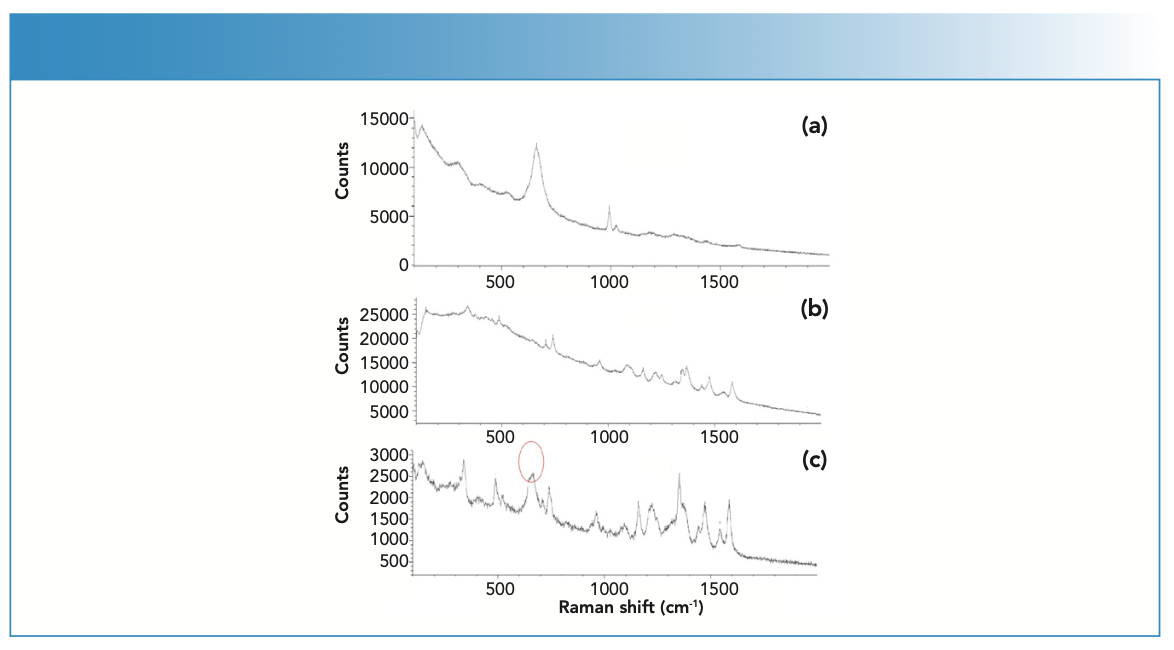
Figure 2 shows the experimental results of two test samples with red ink. Figure 2a and 2b display the photographs of the scanned intersection area. Figure 2c shows the Raman spectra of the sample sealed first and then written, and Figure 2d shows the Raman spectra of the sample written first and then sealed. Both were obtained by scanning from top to bottom and from left to right. Figure 3 further shows the Raman shifts in color depths. The main Raman shift peaks of the seal ink include 1597 cm-1, 1398 cm-1, 1322 cm-1, 1257 cm-1, 1122 cm-1, and 1081 cm-1. In the intersection area of Figure 2a, especially in the red circled area (data sets 50–60), the Raman shift peak intensity is much lower than that of data sets 10–20 (seal only), suggesting that the seal ink is covered by the writing strokes. This is consistent with the conclusion that the samples were sealed first and then written after. In the intersection area of Figure 2b, especially in the red circled area (data sets 50–60), the Raman shift peak intensity is at similar level to that of data sets 10–20 (seal only). This indicates that the seal ink was not covered by the writing strokes, which is consistent with the conclusion that the sample was written first and then sealed.
FIGURE 2: Experimental results of two test samples with red ink. (a) Photo of scanning cross areas and (c) Raman spectra when seal first. (b) Photo of scanning cross areas and (d) Raman spectra when writing first.
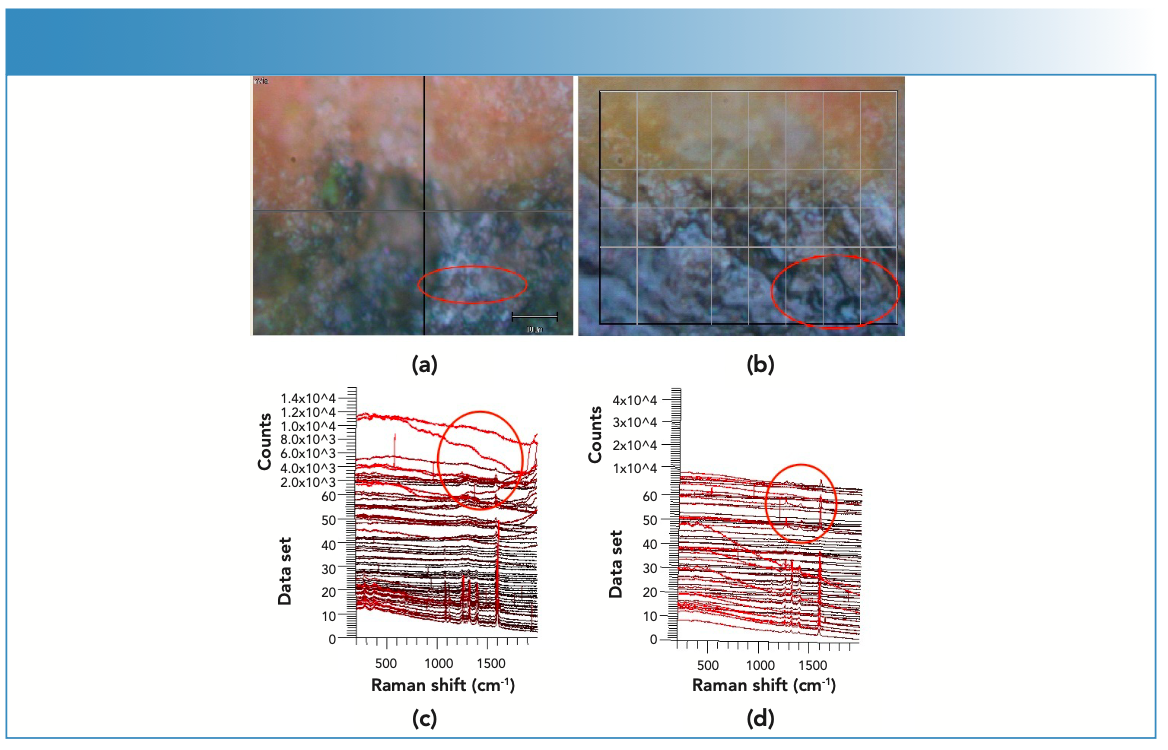
FIGURE 3: Raman spectra in color depths of the samples in Figure 2.
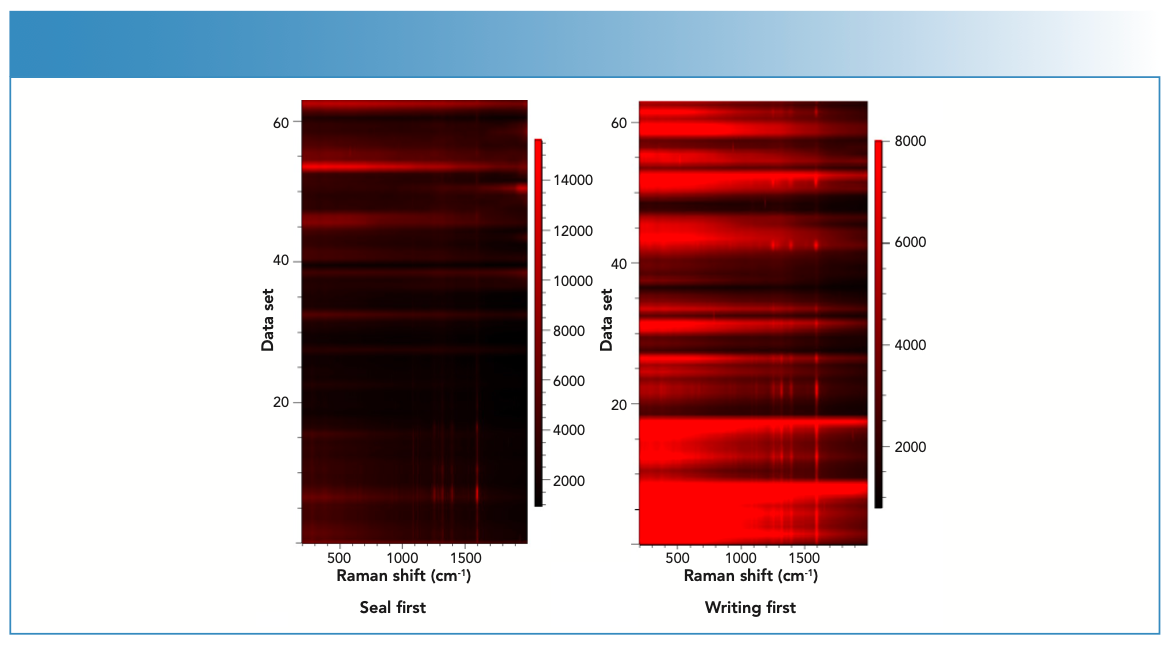
Figure 4 shows the experimental results of other two test samples with different red inks. The Raman shift peaks of this type of red ink mainly appear at 1528 cm-1, 1453 cm-1, 1341 cm-1, 1143 cm-1, 748 cm-1, 681 cm-1, and 593 cm-1. Figures 4a and 4b display the photographs of the scanned intersection area. Figure 4c shows the Raman spectra of the sample sealed first and then written, and Figure 4d shows the Raman spectra of the sample written first and then sealed, both obtained by scanning from top to bottom and from left to right. Figure 5 further shows the Raman shifts in color depths. The results of “seal first” series were consistent with those in Figure 2, where the seal ink was covered by the writing strokes, and coincided with the experiment results (seal first). In the red circled area (data sets 55–60) in Figure 4b and 4d, there were still several spectra in which the Raman shift peak intensities were at high levels (seal only). These spectra were obviously identified in the intersection area; therefore, the seal inks were not covered by the writing strokes and coincided with the experiment results (writing first).
FIGURE 4: Experimental results of two other test samples with different red ink. (a) Photo of scanning cross areas and (c) Raman spectra when seal first. (b) Photo of scanning cross areas and (d) Raman spectra when writing first.
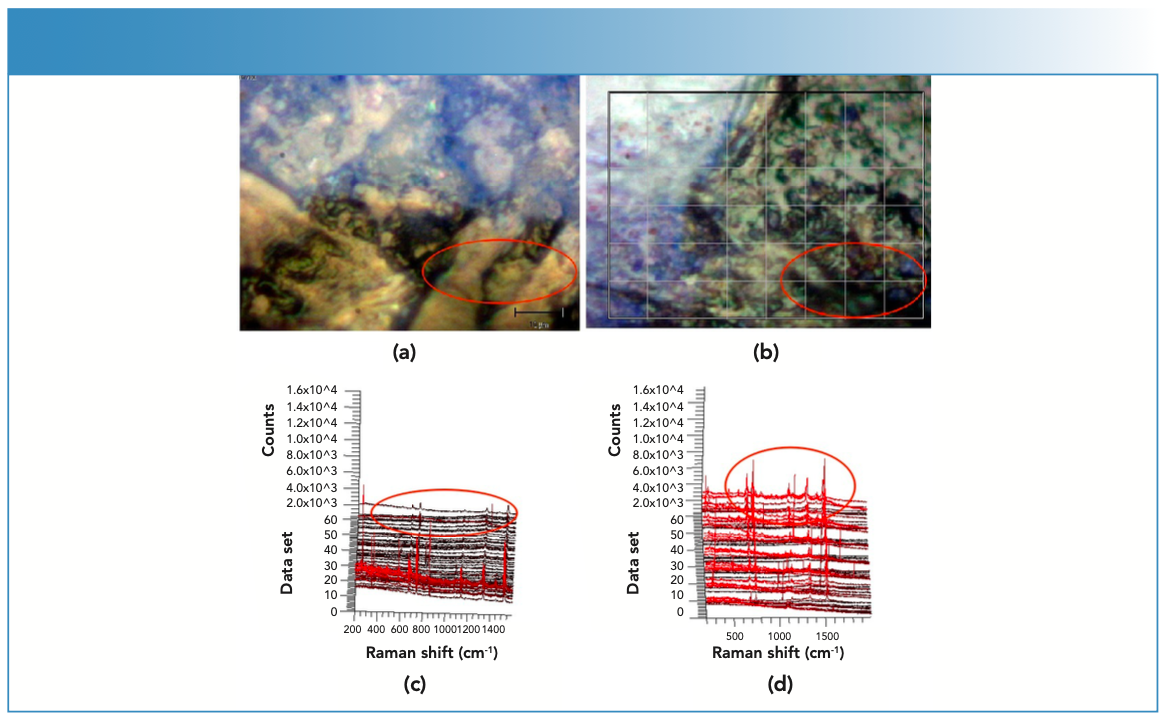
FIGURE 5: Raman spectra in color depths of the samples in Figure 4.
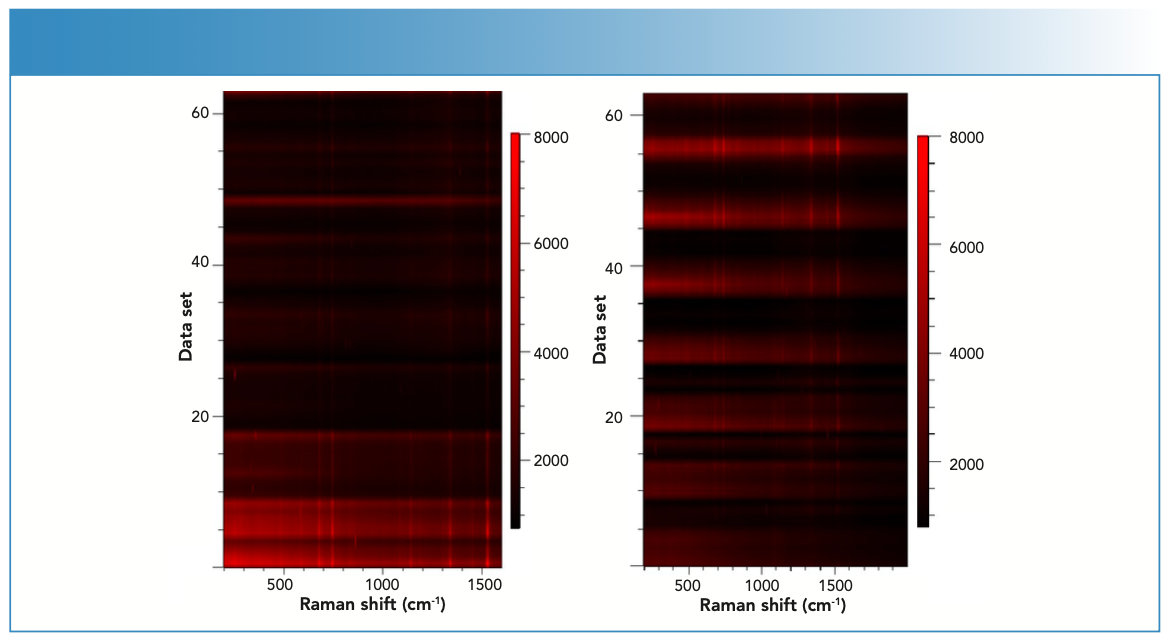
Figure 6 showed the experimental results of two test samples with blue ink for better discrimination. The main Raman shift peaks of the blue ink include 1523 cm-1, 1450 cm-1, 1338 cm-1, 1141 cm-1, 746 cm-1, 678 cm-1, 593 cm-1, and 255 cm-1. For the write-before-seal samples, the seal ink spectra were clearly identified in all data sets in Figure 4c. For the seal-then-write samples, no seal ink spectra was observed in the intersection area, especially in the red circled area, indicating that the seal ink were completely covered by the writing strokes. The Raman scanning spectrum results are also consistent with the sample design.
FIGURE 6: Experimental results of the two test samples with blue ink. (a) Photo of scanning cross areas and (c) Raman spectra when the seal is first. (b) Photo of scanning cross areas and (d) Raman spectra when the writing is first.
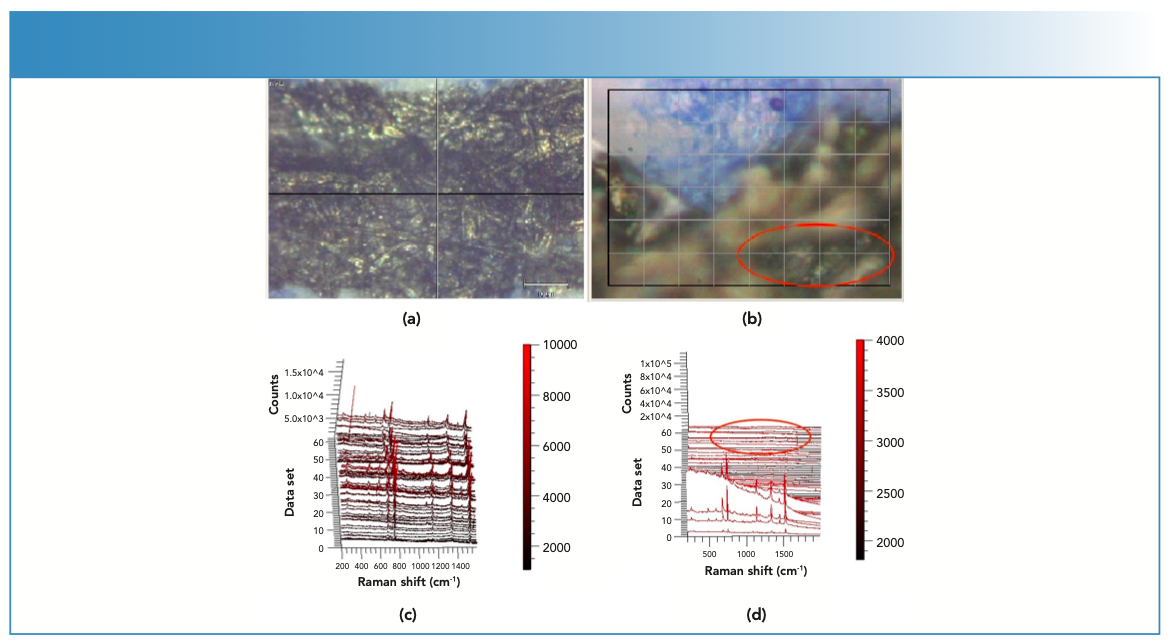
Conclusion
Compared to the method of single-point Raman spectroscopy, the method of Raman area scanning greatly improves document inspection and analysis, particularly when it comes to reliability, automation, and accuracy. It also reduces the possibility of false identification caused by the unevenness of margins at the surface top layer. Raman spectroscopy can be used as a good verification and supplementary method for the intersection printing sequence identification of writing and seal stamps with samples using red or blue seal inks. Reducing fluorescence interference, improving detection signal and stability, and avoiding sample burning still need to be explored in future studies.
References
(1) Koppenhaver, K. M. Forensic Document Examination; Humana Press, 2007.
(2) Chai, T.; Li, B. The Factors Influencing the Identification of the Chronological Intersecting Sequence Between Ink and Toner. J. Forensic Sci. 2021, 66 (6), 2469–2477. DOI: 10.1111/1556-4029.14830
(3) Luo, Z. G.; Wang, W. X.; Pang, X. C.; Zhang, J.; Sun, C. L.; Zhou, X.; He, J.; Zhang, R.; Li, X.; Lian, Z.; Abliz, Z. Writing Sequence Identification of Seals and Signatures in Documents Using Ambient Mass Spectrometry Imaging with Chemometric Methods. Talanta 2021, 235, 122804–122804. DOI: 10.1016/j.talanta.2021.122804
(4) Wang, J. Research on Several Inspection Methods to Determine the Sequence of Photocopying and Stamping. JFSM 2015, 1(2), 93–98. DOI: 10.4103/2349-5014.170601
(5) Farid, S.; Kasem, M. A.; Zedan, A. F.; Mohamed, G. G.; El-Hussein, A. Exploring ATR Fourier Transform IR Spectroscopy with Chemometric Analysis and Laser Scanning Microscopy in the Investigation of Forensic Documents Fraud. Opt. Laser Technol. 2021, 135, 106704 (2021). DOI: 10.1016/j.optlastec.2020.106704
(6) Spagnolo, G. S. Potentiality of 3D Laser Profilometry to Determine the Sequence of Homogenous Crossing Lines on Questioned Documents. Forensic Sci. Int. 2006, 164 (2-3), 102–109. DOI: 10.1016/j.forsciint.2005.12.004
(7) Aneja, P.; Mathur, S.; Dahiya, M. S. Determining Sequence of Strokes of Green Pen Ink and Blue Seal. JFSCI 2017, 4 (1), 555628. DOI: 10.19080/JFSCI.2017.03.555628
(8) Lee, K. Y.; Lee, J.; Kong, S. G.; Kim, B. Sequence Discrimination of Heterogeneous Crossing of Seal Impression and Ink-Printed Text Using Adhesive Tapes. Forensic Sci. Int. 2014, 234, 120–125. DOI: 10.1016/j.forsciint.2013.11.003
(9) Stewart, R.; Li, L. Selective Decolorization of Pigments Within Two and Three Pigmented Inks for Colored Marking by a Q-Switched Laser. J. Laser Appl. 2003, 15 (4), 294–299. DOI: 10.2351/1.1585086
(10) Voorde, L. V.; Vekemans, B.; Verhaeven, E.; Tack, P.; Wolf, R. D.; Garrevoet, J.; Vandenabeele, P.; Vincze, L. Analytical Characterization of a New Mobile X-ray Fluorescence and X-ray Diffraction Instrument Combined with a Pigment Identification Case Study. Spectrochim. Acta Part B At Spectrosc. 2015, 110, 14–19. DOI: 10.1016/j.sab.2015.05.002
(11) Black, D.A. The Microscope in Document Examination. J. Crim. Law Criminol. 1952, 42 (6), 810–820. DOI: 10.2307/1139695
(12) Dreger, A. A. A Comparison Microscope for Document Examination. Can. Soc. Forensic Sci. J. 2013, 6 (4), 175–179. DOI: 10.1080/00085030.1973.10757311
(13) Baier, P. E. Technical Improvements of Scanning Electron Microscope Methods in Document Examination. Forensic Sci. Int. 1983, 22 (2-3), 265–278. DOI: 10.1016/0379-0738(83)90023-3
(14) Heudt, L.; Debois, D.; Zimmerman, T. A.; Köhler, L.; Bano, F.; Partouche, F.; Duwez, A. S.; Gilbert, B.; Pauw, E. D. Raman Spectroscopy and Laser Desorption Mass Spectrometry for Minimal Destructive Forensic Analysis of Black and Color Inkjet Printed Documents. Forensic Sci. Int. 2012, 219 (1-3), 64–75. DOI: 10.1016/j.forsciint.2011.12.001
(15) Morais, D. R.; Campelo, J. M.; Razzo, D.; Eberlin, M. N.; Costa, J. L; Santos, J. M. Forensic Determination of Crossing Lines Involving Stamp and Pen Inks by Mass Spectrometry Imaging. Anal. Methods 2020, 12, 951–958. DOI: 10.1039/C9AY02330E
(16) Zhao, Y. X.; Zeng, L. Y. Z.; Li, K. K. Identification of Different Brands Erasable Pens by Infrared Spectroscopy Combined with Chemometrics Methods. Spectrosc. Spect Anal. 2021, 41 (8), 2420–2426. DOI: 10.3964/j.issn.1000-0593(2021)08-2420-07
(17) Ameh, P.; Ozovehe, M.S. Forensic Examination of Inks Extracted from Printed Documents using Fourier Transform Infrared Spectroscopy. Edelweiss Appli Sci Tech. 2018, 2 (1), 10–17. DOI: 10.33805/2576.8484.107
(18) Kumar, R.; Kumar, V.; Sharma, V. Fourier Transform Infrared Spectroscopy and Chemometrics for the Characterization and Discrimination of Writing/Photocopier Paper Types: Application in Forensic Document Examinations. Spectrochim. Acta A Mol. Biomol. Spectrosc. 2017, 170, 19–28. DOI: 10.1016/j.saa.2016.06.042.
(19) Udriştioiu, E. G.; Bunaciu, A. A.; Aboul-Enein, H. Y.; Tănase, I. Gh. Infrared Spectrometry in Discriminant Analysis of Laser Printer and Photocopy Toner on Questioned Documents. Instrum Sci Technol. 2009, 37 (2), 230–240. DOI: 10.1080/10739140902735688
(20) Fikiet, M. A.; Khandasammy, S.R.; Mistek, E.; Ahmed, Y.; Halamkova, L.; Bueno, J.; and Lednev, I. K. Forensics: Evidence Examination via Raman Spectroscopy. Phys. Sci. Rev. 2018, 4 (2), 20170049. DOI: 10.1515/psr-2017-0049
(21) Johnson, C. E.; Martin, P.; Roberts, K. A.; Trejos, T.; Corzo, R.; Almirall, J. R.; Safer, A. M. J. The Capability of Raman Microspectroscopy to Differentiate Printing Inks. Forensic Sci. 2018, 63 (1), 66–79. DOI: 10.1111/1556-4029.13508
(22) Liu, S.; Feng, J. M.; Lv, J. G. Discrimination of Blue Ballpoint Pen Inks in Chinese Market with Confocal Raman Microscope. Pigment. Resin Technol. 2014, 43 (1), 45–51. DOI: 10.1108/PRT-12-2012-0089
(23) Chen, R.; Lv, J. G.; Feng, J.; Liu, Y. M. Discrimination of Seal Inks Used for Seals by Confocal Raman Microscopy. Pigment. Resin Technol. 2014, 43 (6), 389–393. DOI: 10.1108/PRT-10-2013-0096
Chao Guo, Yiwen Ge, Lan Chu, Qing Zhang, Qing Wang, Mingyang Hao, Jungang Lv, and Zhe Liu are with the Procuratoral Technology and Information Research Center, at the Supreme People’s Procuratorate, in Beijing, China. Direct correspondence to: Jungang Lv at sdtaljg@163.com ●
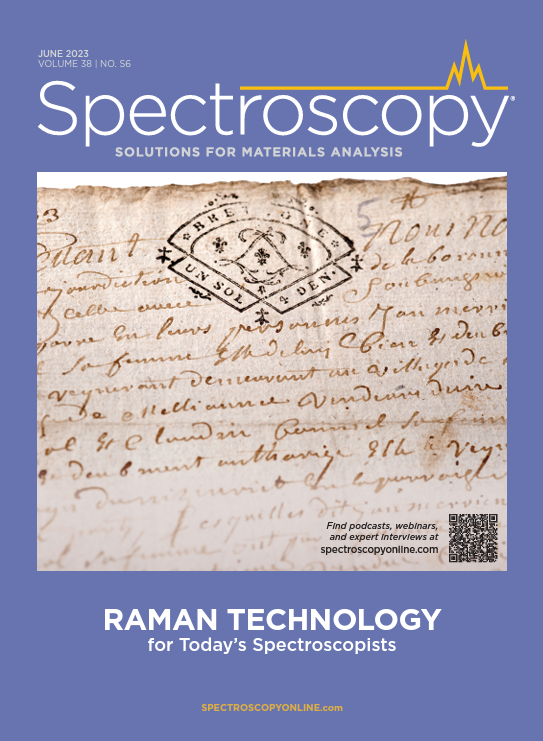
AI-Powered SERS Spectroscopy Breakthrough Boosts Safety of Medicinal Food Products
April 16th 2025A new deep learning-enhanced spectroscopic platform—SERSome—developed by researchers in China and Finland, identifies medicinal and edible homologs (MEHs) with 98% accuracy. This innovation could revolutionize safety and quality control in the growing MEH market.
New Raman Spectroscopy Method Enhances Real-Time Monitoring Across Fermentation Processes
April 15th 2025Researchers at Delft University of Technology have developed a novel method using single compound spectra to enhance the transferability and accuracy of Raman spectroscopy models for real-time fermentation monitoring.
Nanometer-Scale Studies Using Tip Enhanced Raman Spectroscopy
February 8th 2013Volker Deckert, the winner of the 2013 Charles Mann Award, is advancing the use of tip enhanced Raman spectroscopy (TERS) to push the lateral resolution of vibrational spectroscopy well below the Abbe limit, to achieve single-molecule sensitivity. Because the tip can be moved with sub-nanometer precision, structural information with unmatched spatial resolution can be achieved without the need of specific labels.